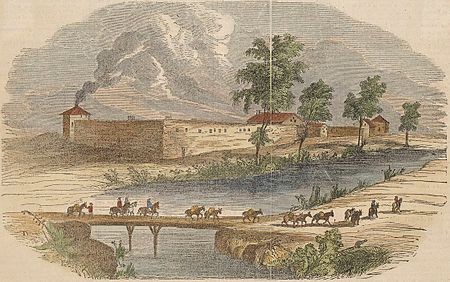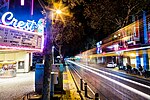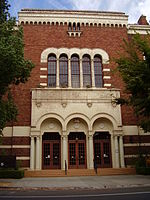Sutter's Fort

Sutter's Fort was a 19th-century agricultural and trade colony in the Mexican Alta California province. The site of the fort was established in 1839 and originally called New Helvetia (New Switzerland) by its builder John Sutter, though construction of the fort proper would not begin until 1841. The fort was the first non-indigenous community in the California Central Valley. The fort is famous for its association with the Donner Party, the California Gold Rush, and the formation of the city of Sacramento, surrounding the fort. It is notable for its proximity to the end of the California Trail and Siskiyou Trails, which it served as a waystation. After gold was discovered at Sutter's Mill (also owned by John Sutter) in Coloma on January 24, 1848, the fort was abandoned. The adobe structure has been restored to its original condition and is now administered by California Department of Parks and Recreation. It was designated a National Historic Landmark in 1961.
Excerpt from the Wikipedia article Sutter's Fort (License: CC BY-SA 3.0, Authors, Images).Sutter's Fort
K Street, Sacramento
Geographical coordinates (GPS) Address Website Nearby Places Show on map
Geographical coordinates (GPS)
| Latitude | Longitude |
|---|---|
| N 38.573333333333 ° | E -121.47138888889 ° |
Address
State Indian Museum (SHP)
K Street
95816 Sacramento
California, United States
Open on Google Maps





